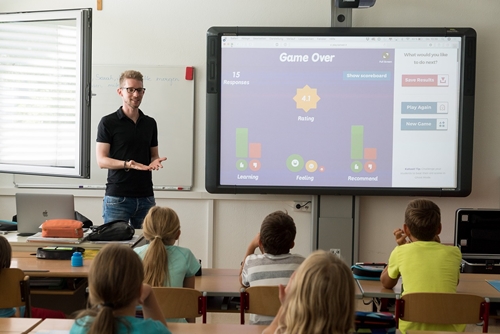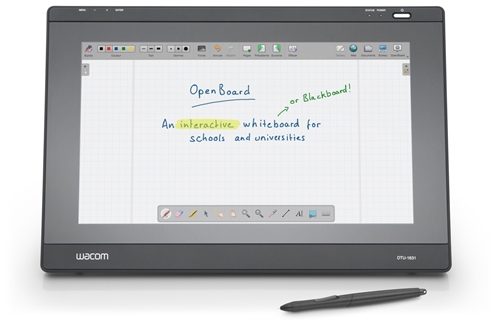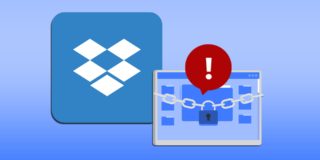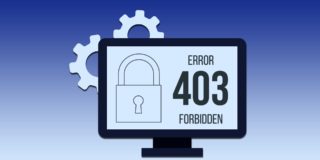Interactive Board Ultrasonic Open Source

These days it seems like there’s not a single aspect of our daily routine that isn’t somehow tied to electronics or IT. One area where advances have certainly been made is blackboards, or whiteboards as we know them today. The SMART whiteboard, smartboard, interactive whiteboard, or however else you want to call it is slated to become a two-billion-dollar industry very soon.
Large-scale growth anywhere invites players who are highly incentivized to make a profit. Therefore, the preponderance of interactive whiteboard software is expensive. But open-source options do exist and you can learn about them in this article.
A Brief Introduction to Interactive Whiteboards
Interactive whiteboards (IWBs) aren’t exactly a new technology; they have been used in office settings since at least 1990. There are many different types, but the basic functionality is the same. An image is projected onto a surface that users can interact with. The interaction may take place through a touchpad, an IR pen, ultrasound positioning, and many other types of controllers.

Ultimately, the point is to create a big computer screen that can serve to ease the transfer of information. For the most part, the reception has been very favorable. However, some exceptions do exist. Critics warn that it shifts the focus from the students to the technology and maybe even arrests the development of new teaching techniques. In any case, they’re here to stay, so let’s take a look at some of the open-source software available for them.
OpenBoard
OpenBoard is probably going to be your first and last choice when it comes to open source IWB software. The issue isn’t so much that it’s the only one (which it technically is), but rather that it’s easily the best choice. The software was developed in 2003 and eventually sold to a non-profit organization which made it open-source.
By all accounts, it is a simple program aimed at meeting a wide variety of needs rather than hyper-focusing on specific fields of study. Obviously, the biggest selling point is that it’s a free, open-source project. New features are added frequently as more developers become involved. Stable versions are available for Windows, Linux, and MacOS. Interest is growing for OpenBoard and new developers are signing on regularly, so it may soon become the industry gold standard.
To use OpenBoard, all you have to do is install and run it. It has all the standard features of IWBs. To project it using an ultrasonic whiteboard projector, simply connect it to the computer that’s running OpenBoard and perform any necessary installations. Then, connect the computer to a projector and enjoy your interactive whiteboard. You should be able to interact with the projection using the e-pen included with your setup.

Free Alternatives
As far as open-source IWD software goes, OpenBoard is really the only game in town. Open Sankore was the predecessor to OpenBoard. Sankore still exists but is no longer in development. As of now, there are no worthwhile contenders. There are other alternatives, but they aren’t open–source. Instead, they are just free software. The website for Open Sankore is inactive, but you can still download it from this GitHub repository.
If you’re interested in collaborating on whiteboard software, then OpenBoard is the place for you. Otherwise, you may actually be better off using one of the many free options available. It will make things easier for you on many levels. Most free whiteboard software is made for online use. You won’t even need to install anything; just visit the website and start working.
You could start with something like Web Whiteboard. This completely free, web-based whiteboard is designed for multipurpose collaborative sessions. Then there’s Tutorialspoint’s whiteboard, a sleek intuitive option, also completely free. Again, many options are out there. There are even whiteboards that cater to specific subject matters, such as engineering or design.

A Little Less Conversation, a Little More Interaction
There may not be an embarrassment of riches when it comes to open-source options for IWB software. The only viable choice is OpenBoard. That said, it’s still a very good choice with just about all the options you are likely to need.
Ultrasonic peripherals for whiteboard pairing will come preloaded with their proprietary software. There is no real benefit in trying to modify that. Ultimately, maybe you will decide that you don’t need open-source whiteboard software at all, and a free version will do just fine.
Do you need a whiteboard for yourself or for your institution? Have you noticed better engagement with this technology for yourself or your students? We’d love to hear about your experiences in the comments below.
















